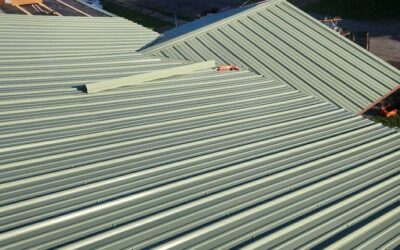How to Stop Rain From Coming Down My Chimney: The Ultimate Guide for Homeowners
One of the most frustrating issues homeowners can face is water coming down their chimney, especially during heavy rainstorms. Not only does this cause immediate inconvenience, but it can also lead to significant damage to your home if left unaddressed. Whether you use your chimney for a fireplace, wood stove, or other venting purposes, the last thing you want is water infiltrating your chimney. In this comprehensive guide, we’ll explore the common causes of rain entering your chimney, potential consequences, and practical steps you can take to prevent rain from coming down your chimney.
Why Is Rain Coming Down My Chimney?
Before diving into solutions, it’s essential to understand why rain is coming down your chimney in the first place. Rainwater can enter your chimney for several reasons, and identifying the root cause is the first step in resolving the issue.
1. Damaged Chimney Cap
A chimney cap is one of the most effective ways to prevent rainwater from entering your chimney. However, if the chimney cap is damaged, rusted, or missing, it will allow rain to seep into the flue, leading to water entering your chimney.
2. Improperly Installed or Missing Chimney Flashing
Chimney flashing is the material that seals the joint between the chimney and the roof. If the flashing is poorly installed or becomes loose over time, it can create gaps that allow rain to penetrate into the chimney structure. Missing or damaged flashing is a common cause of chimney leaks.
3. Cracked or Damaged Chimney Crown
The chimney crown is the concrete or mortar surface at the top of the chimney. It protects the interior of the chimney from rain and debris. If the crown becomes cracked or deteriorates over time, it can allow water to enter the chimney. A damaged crown is a significant cause of water intrusion.
4. Flue Damage or Blockage
A blocked or damaged chimney flue can prevent rain from being properly diverted, leading to water pooling inside the chimney. In some cases, debris, animal nests, or even soot buildup can create a blockage that makes the chimney more susceptible to leaks.
5. Improper Chimney Maintenance
Chimneys require regular maintenance to keep them in good working condition. Failure to schedule annual inspections, cleanings, and repairs can result in a buildup of creosote and other materials that may contribute to leaks or blockages in the flue.
6. Old or Worn-Out Chimney Materials
Over time, the materials used to build your chimney, such as brick, mortar, and stone, can deteriorate. Weathering, age, and exposure to the elements can cause cracks and gaps, allowing rainwater to enter the chimney. Even small cracks can lead to water infiltration if left unaddressed.
Consequences of Rain Entering Your Chimney
Rain entering your chimney may seem like a minor inconvenience at first, but it can lead to a host of problems if not resolved promptly. Here are some of the potential consequences of rain entering your chimney:
1. Water Damage to the Chimney Structure
If rainwater is allowed to consistently enter your chimney, it can cause damage to the chimney’s masonry, flue, and other components. Over time, water can erode the mortar between the bricks, leading to cracks, shifting, and structural weakening. In severe cases, water damage can compromise the entire chimney structure, requiring expensive repairs or even a full chimney rebuild.
2. Rusting of Metal Components
Rainwater entering the chimney can cause rust to form on metal components, such as the damper, chimney cap, or flue liner. Rust can weaken these parts, causing them to malfunction or deteriorate completely. This can lead to more costly repairs down the line and reduce the overall functionality of your chimney.
3. Creosote Buildup
Water entering the chimney can cause creosote, a highly flammable substance produced by burning wood, to condense and accumulate inside the chimney. This increases the risk of a chimney fire. Additionally, excessive moisture can lead to the growth of mold and mildew inside the chimney, which can cause health problems and further damage to your home.
4. Increased Risk of Fire
The presence of water inside your chimney can cause issues with the draft, making it difficult for smoke and gases to exit your home properly. A blocked or compromised chimney can increase the risk of a fire, as the buildup of flammable materials like creosote becomes more likely.
5. Damage to Interior of Your Home
In extreme cases, rainwater can travel down the chimney and cause water damage to the ceiling, walls, and floors of the room with the fireplace or stove. This can result in unsightly stains, wood rot, and other forms of water damage that can be expensive to repair.
6. Unpleasant Odors
Water infiltration can cause an accumulation of mold and mildew inside your chimney, leading to musty odors that can seep into your home. These odors can be difficult to remove and may require professional cleaning to fully eliminate.
How to Stop Rain From Coming Down Your Chimney
Now that we’ve identified the common causes and potential consequences of rain entering your chimney, let’s discuss how to stop rain from coming down your chimney. There are several steps you can take to prevent water infiltration and protect your chimney from damage.
1. Install or Replace a Chimney Cap
One of the most effective ways to prevent rain from entering your chimney is by installing a chimney cap. A chimney cap is a protective cover that sits on top of the chimney flue and prevents rain, debris, and animals from entering. It also helps to prevent downdrafts, which can bring cold air and smoke into your home.
Chimney caps come in various materials, including stainless steel, copper, and aluminum. When choosing a chimney cap, make sure it is the correct size for your chimney and is designed to handle the specific weather conditions in your area. A professional chimney technician can help you select and install the right cap for your needs.
2. Repair or Replace Damaged Flashing
Chimney flashing is an essential part of your roof’s waterproofing system. It helps seal the gap between the roof and chimney to prevent water from infiltrating. If your flashing is damaged, missing, or improperly installed, it can lead to leaks and water entering your chimney.
To fix this issue, you’ll need to inspect the flashing for signs of damage, such as rust, gaps, or loose sections. If you find any issues, it’s important to have the flashing repaired or replaced by a professional roofer or chimney technician. Proper installation of flashing is critical to ensuring the long-term protection of your chimney.
3. Inspect and Repair the Chimney Crown
The chimney crown is a critical part of the chimney system that prevents rainwater from entering the chimney. It sits at the top of the chimney and directs water away from the flue. Over time, the crown can crack or deteriorate, leading to water infiltration.
If you notice that the chimney crown is cracked or damaged, it’s essential to have it repaired or replaced. Chimney crown repair may involve applying a new layer of cement or installing a new concrete or stone crown. A professional chimney technician can assess the condition of your crown and recommend the best course of action.
4. Clear the Chimney Flue of Debris and Blockages
A blocked chimney flue can prevent rainwater from properly draining, causing it to pool inside the chimney. Common blockages include animal nests, debris, soot buildup, and even creosote accumulation.
Regular chimney cleanings are essential to ensure that the flue remains clear of debris and blockages. A certified chimney sweep can remove any buildup, inspect the flue for damage, and ensure that water can flow freely through the chimney. Regular maintenance helps prevent rainwater from accumulating inside the chimney.
5. Seal Cracks in the Chimney Structure
Over time, cracks may form in the masonry, mortar, or brick of your chimney, which can allow rainwater to infiltrate. It’s essential to have any cracks or gaps sealed to prevent water damage.
A professional chimney technician can perform a thorough inspection of the chimney and apply a water-resistant sealant to any cracks or gaps in the structure. This helps protect the masonry from water infiltration and extends the lifespan of your chimney.
6. Consider Installing a Water-Repellent Coating
Another way to protect your chimney from water infiltration is by applying a water-repellent coating to the masonry. These coatings are designed to prevent moisture from penetrating the surface of the brick and mortar while still allowing the chimney to “breathe.” A breathable, water-repellent coating helps reduce the risk of water damage and mold growth inside the chimney.
7. Regular Chimney Inspections and Maintenance
Routine chimney inspections and maintenance are essential to keep your chimney in good condition and prevent water damage. An annual inspection by a certified chimney professional can identify potential issues such as cracks, blockages, and flashing problems before they lead to water infiltration. Regular cleaning, repair, and maintenance will help ensure that your chimney remains functional and protected from the elements.
Conclusion: Keep Your Chimney Dry and Safe
Rain entering your chimney can cause significant damage if not addressed promptly. However, with the right preventative measures, you can stop rain from coming down your chimney and protect your home from water damage. Installing a chimney cap, repairing damaged flashing and crowns, clearing the flue, sealing cracks, and applying water-repellent coatings are all effective ways to keep your chimney dry and safe.
Regular maintenance and inspections are key to ensuring your chimney remains in top condition. If you’re unsure how to address chimney leaks or water infiltration, consult a certified chimney professional who can assess the situation and provide the necessary repairs. By taking action now, you can avoid costly repairs and protect your home from the damaging effects of water infiltration.
 (440) 307-2060
(440) 307-2060


